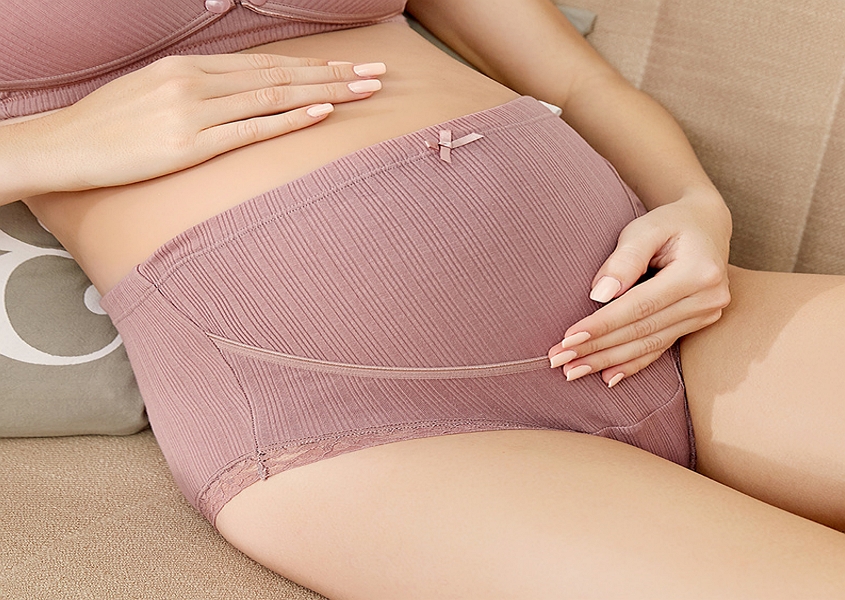What are maternity panties and how do they differ from regular panties? This is a common question for the first time, pregnant moms. In this blog post, we will discuss what it is.
Maternity panties offer more coverage than regular underwear during pregnancy as the belly grows, but there is no difference in style or shape of the fabric; it’s made with a wider waistband to provide extra support for your changing body.

Regular underwear also offers this same type of weightless stretch that will fit every stage of growth you experience during pregnancy and postpartum recovery.
Most women notice their sizing change daily and even hourly so instead of buying new pairs throughout those nine months we suggest purchasing one size larger than your normal underwear size.
Maternity panties are a great option for the expecting mom because they provide coverage without bulk, especially during later stages of pregnancy when regular underwear is no longer comfortable due to your growing belly.
Maternity pants are made with wider bands that will help support your changing body through all nine months of growth and beyond into postpartum recovery.
You can expect to see changes in sizing throughout pregnancy so instead of buying too many new pairs before the baby arrives you may want to purchase one size larger than what you wear normally. Regular cotton undies offer the same type of weightless stretch and fit every stage while providing comfort and breathability as well!
Are our maternity clothes a waste of money?
Not necessarily. Many women find themselves wearing maternity clothes for longer than they planned on, even after having more children or losing some weight.
If you still fit into your pre-pregnancy clothes but just want to wear something more comfortable during pregnancy, then it is probably a good idea to buy cheap maternity clothing while you’re pregnant and save the pricier items for later use when you’ll need them.
However, if it’s all brand new outfits that cost more than $15 per piece (or $20 total), think twice before buying too much of one thing in different colours because it may not be so practical later on. This way you can focus on spending money where necessary without overspending by getting things that aren’t even necessary.
Maternity clothing is not only for pregnant women; it can also be used by mothers who are nursing their young ones and need something more comfortable to wear every day.
However, good quality maternity clothes usually do cost a lot of money so what you want to look at when buying them is whether or not they will last through all the stages that your body goes through during pregnancy (and later on with breastfeeding) without wearing down too quickly.
You’ll probably end up spending some money no matter which option you choose but if possible avoid purchasing brand new pieces of expensive-looking maternity clothing unless there’s nothing else available because chances are pretty high that these items won’t fit comfortably after months have passed since purchase – regardless of whether or not you’re still pregnant.
What month do you start wearing maternity clothes?
When you are pregnant, it is recommended to start wearing maternity clothes around the middle of your second trimester.
This gives you enough time for any growth that needs to happen before having a baby in your arms! You can even get away with continuing to wear some regular clothing items (including jeans) until closer to the end of pregnancy.
However, once you reach about 20 weeks into gestation, it will be more difficult if not impossible to comfortably fit inside your original wardrobe options and they may feel more restrictive on an expanding belly too.
It often takes women by surprise how quickly their bellies grow during later stages of pregnancy since this part of the journey seems more comfortable initially when compared with morning sickness or aches and pains elsewhere on their body like their back.
What are the exercises for normal delivery?
In some cases, a doctor may recommend exercises to prepare for labour. In normal deliveries of full-term infants, the mother’s contractions begin with an early phase of uterine muscle cell activity that is detectable within 15 minutes of initiation and becomes more intense over several hours before finally slowing down again after about 20 or 21 hours.
At this point, the cervix begins opening up in preparation for birth (known as “dilatation”) though it typically remains tightly shut during these first two phases until around 30%.
During this period, women are advised against heavy lifting or straining which can cause complications such as low fetal heart rate by increasing intrauterine pressure. Instead, they should focus on lighter activities like walking and pelvic floor strengthening exercises.
When should a pregnant woman start exercising?
A pregnant woman should begin exercising after consulting with her doctor. It is important to wait until the first trimester has passed before beginning an exercise regimen because at this point in your pregnancy you are not experiencing any of the discomforts that will come later on.
Some women decide they do not want to work out during their entire pregnancy and others see it as a great opportunity to get back into shape or stay fit throughout gestation.
For most expectant mothers, light-duty exercises like yoga are sufficient for meeting fitness goals while improving mental health and sleep quality.
Pregnant women who choose high impact workouts such as jogging may be putting themselves at risk for injury due to changes in their centre of gravity caused by growing baby weight.
You can’t say that if you do X, Y will happen. But many pregnant women report feeling better and having easier labor when they exercise regularly during pregnancy.
